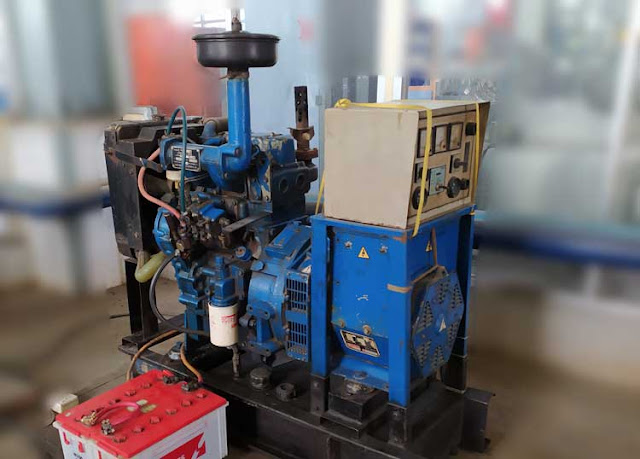Generator is most commonly used in the industrial field for supplying power remotely to construction sites and the area of power outage. It is used to convert mechanical energy to electricity. Generators are also used to backup instantly power to the hospitals and factories if main power goes out.
major components of generator
Here are some major components of generator with a different function
Engine: Engine supplies mechanical power to the generator. Engine uses the fuel source like diesel,gas, gasoline and converts it through the internal combustion process. Fuels are used according to the type of generator. Gasoline and diesel are most commonly used in engines.
Alternator: Alternator converts mechanical energy to electricity. Alternator is driven by the belt through the engine crankshaft. When the engine starts running it rotates the belt and the rotor starts rotating. Alternator consists of both stationary and moving components inside the housing. A set of electrical conductors(Known as stationary components) wounded the coil into the iron core. And moving components like induction,exciter and magnets produce a rotating magnetic field known as rotor or armature.
Fuel system: Fuel system is the most important part of the generator. It is impossible to run the engine without fuel. So it is important to supply the clean fuel to the generator. Fuel system consists of the common parts like Pipe connection, Fuel injector, Fuel pump, Fuel filter and Overflow pipe.Pipe connection supplies fuel from the to the engine. Overflow pipe helps to drainage excess fuel from the tank. Fuel pump transfer fluid from tank to engine. Fuel filter removes foreign particles from the fuel. Fuel injector helps to spray the fuel to the combustion chamber.
Lubrication system: Lubrication system is the most important part of the generator to reduce heat and friction from moving parts which enhance the efficiency of the engine and provide long working life. During the operation of generator, the operator or user should check the lubrication level after every 8 hours of running. Also should check the leakages and solve them if any leakage is found.It is essential to change the lubrication oil after 500 hours of generator operation.
Control panel: It is the user interface of the generator. If needed any adjustment the control panel helps to do that and also helps to monitor the various systems. Operators also get noticed about the produced voltage by the generator, electrical current and the frequency.
Voltage regulator: Voltage regulator is the most important part to supply the constant voltage. Voltage regulator converts AC voltage to DC current.
Battery charger: Battery helps the generator engine start for operation. That's why batteries need to charge properly. Battery charger charges the battery and prepares for the generator start.
Cooling system: Most of the industrial generators used water-cooled cooling system. Large type of generator supported with a cooling tower. This system dissipates heat and keeps the engine cool.
Exhaust system: Generator produces heat from the combustion process and this heat is collected by the exhaust system and out to the atmosphere. Exhaust system also helps to reduce the noise created by the higher speed gas flows.
Our youtube channel
major components of generator


Post a Comment